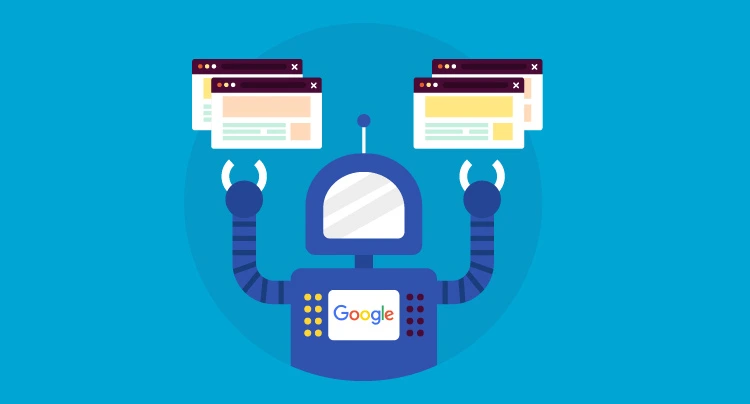What Is Google Crawl Budget? & How to Optimise It

Imagine you’ve just added a new, game-changing service to your website. You've written compelling copy, included stunning visuals, and are ready to attract new clients. But days, even weeks, pass, and your new page is nowhere to be found in Google's search results. Why? The answer often lies in an unseen, yet critical, concept of technical SEO: your website's crawl budget.
At its core, a crawl budget is the number of pages Googlebot, Google’s web crawler, can and wants to crawl on your website within a specific timeframe. Think of Googlebot as a diligent librarian with a finite amount of time and energy. It wants to catalogue every book (web page) in the world’s largest library (the internet), but it can only spend so much time on each individual bookshelf (your website) before it has to move on. For most small blogs, this isn't a concern. But for growing e-commerce stores, news portals, or any large site with thousands of URLs, an unoptimised crawl budget can be the difference between your content being discovered and it languishing in obscurity.
At Appear Online, we believe that true SEO success is built on a solid technical foundation. Our team specialises in comprehensive website audits that go beyond the surface, identifying and resolving the technical roadblocks, like crawl budget inefficiencies, that hold your website back.
If you're running a large, complex website and need to ensure every page is working for you, contact us for a detailed crawl budget analysis and see how a focused, strategic approach can transform your online visibility.

Crawl Budget 101: Deconstructing the Two Key Components
To truly master crawl budget, we must understand its two primary drivers:
- Crawl Capacity Limit: This is Google's "good citizen" approach. Googlebot has a maximum number of parallel connections it can open to your site and a maximum number of pages it can crawl before it risks overwhelming your server. A healthy, fast-loading website with a robust server response time tells Google that it has a higher capacity for crawling. Conversely, a slow, buggy site with frequent server errors signals to Googlebot that it should slow down or even stop crawling to avoid causing problems. This is the first, fundamental hurdle to clear.
- Crawl Demand: This is where strategy comes into play. Crawl demand is how much Google wants to crawl your website. It’s a dynamic metric based on factors like the site's perceived importance (PageRank), its popularity (backlinks and traffic), and, crucially, how often the content is updated. Google wants to provide fresh, relevant content to its users. If your website is constantly publishing new, high-quality information, Google's crawl demand will naturally increase, and it will allocate more of its resources to visiting your site more frequently.
.webp)
The Crawl Budget Myth: "It Only Matters for Giants"
A common misconception is that crawl budget is only a concern for websites with millions of pages. While it's a critical issue for e-commerce giants and major news outlets, this perspective is dangerously shortsighted for any ambitious business. Even a website with a few hundred pages can suffer from crawl budget inefficiency if a large portion of those pages are low-quality, canonicalised, or broken.
Consider an e-commerce site with 5,000 product pages. If 2,000 of those pages are old, out-of-stock items that generate 404 errors, Googlebot is wasting nearly half its allocated time on pages that provide no value. This "wasted budget" could have been spent on discovering your new, high-profit product pages or your latest blog post. Optimising crawl budget is not about appeasing a search engine; it's about ensuring your most valuable content is seen and indexed as quickly and efficiently as possible.
.webp)
Seven Strategic Pillars to Optimise Your Crawl Budget
Mastering crawl budget is a strategic exercise in efficiency. Here's how to take control:
- Improve Site Speed and Server Response Time: This is the foundation. Google's crawl capacity is directly tied to how quickly your server responds. Use tools like Google PageSpeed Insights and Lighthouse to identify and fix performance bottlenecks. Faster sites allow Googlebot to get more done in less time, effectively expanding your crawl budget.
- Eliminate Low-Value and Duplicate Content: This is arguably the most impactful step. Identify and either remove or de-index thin, outdated, or duplicate pages. For example, if your e-commerce site generates URLs for every possible product filter combination, these pages add no value and consume your crawl budget. Use robots.txt to block crawlers from these areas, or use canonical tags to tell Google which page is the "master" version.
- Fix Broken Links and Redirects: A 404 error page is a dead end for Googlebot. It wastes time and signals a poorly maintained site. Regularly audit your website for broken links and fix them. Similarly, long redirect chains (e.g., Page A -> Page B -> Page C) are a crawl-wasting headache. Consolidate these into single-hop redirects (Page A -> Page C) whenever possible.
- Manage and Submit a Clean XML Sitemap: An up-to-date XML sitemap is your roadmap to Google. It tells the crawler exactly where to find your most important pages, ensuring they are not missed. Only include canonical, high-value pages in your sitemap.
- Strengthen Your Internal Linking Structure: A well-organised internal link structure helps Googlebot discover new content and understand the hierarchy of your website. Linking from a high-authority page to a new, important page signals its value to Googlebot and encourages it to crawl the new page.
- Update Content Regularly: As we discussed, crawl demand is tied to content freshness. Make it a habit to update old blog posts, product descriptions, or case studies. This signals to Google that your site is active and provides up-to-date information, prompting more frequent crawls.
- Address Mobile-First Indexing Issues: With Google's mobile-first indexing, the mobile version of your site is the primary one used for ranking. Ensure your mobile site is fast, fully crawlable, and that it contains all the important content and links present on your desktop site. Discrepancies can confuse Googlebot and lead to a wasted crawl budget.
.webp)
Conclusion: A Strategic Investment in Your Digital Future
Optimising your crawl budget is not a one-time task; it's a strategic, ongoing process that signals to Google that your website is technically sound, well-managed, and a valuable source of information. By proactively managing your crawl budget, you are ensuring that every new piece of content has the best possible chance of being discovered, indexed, and ranked.
References:
https://developers.google.com/search/docs/crawling-indexing/googlebot
.avif)





.webp)


